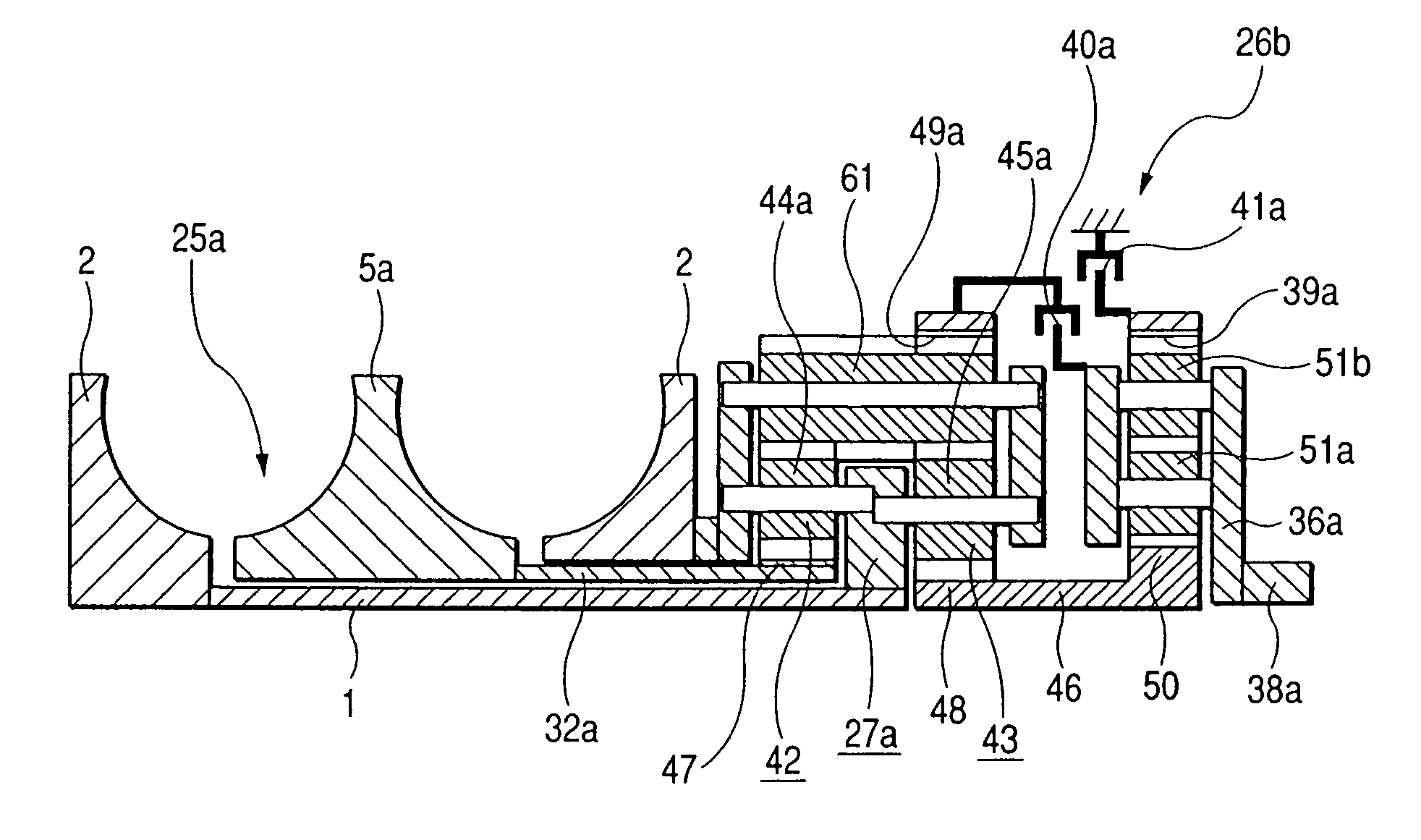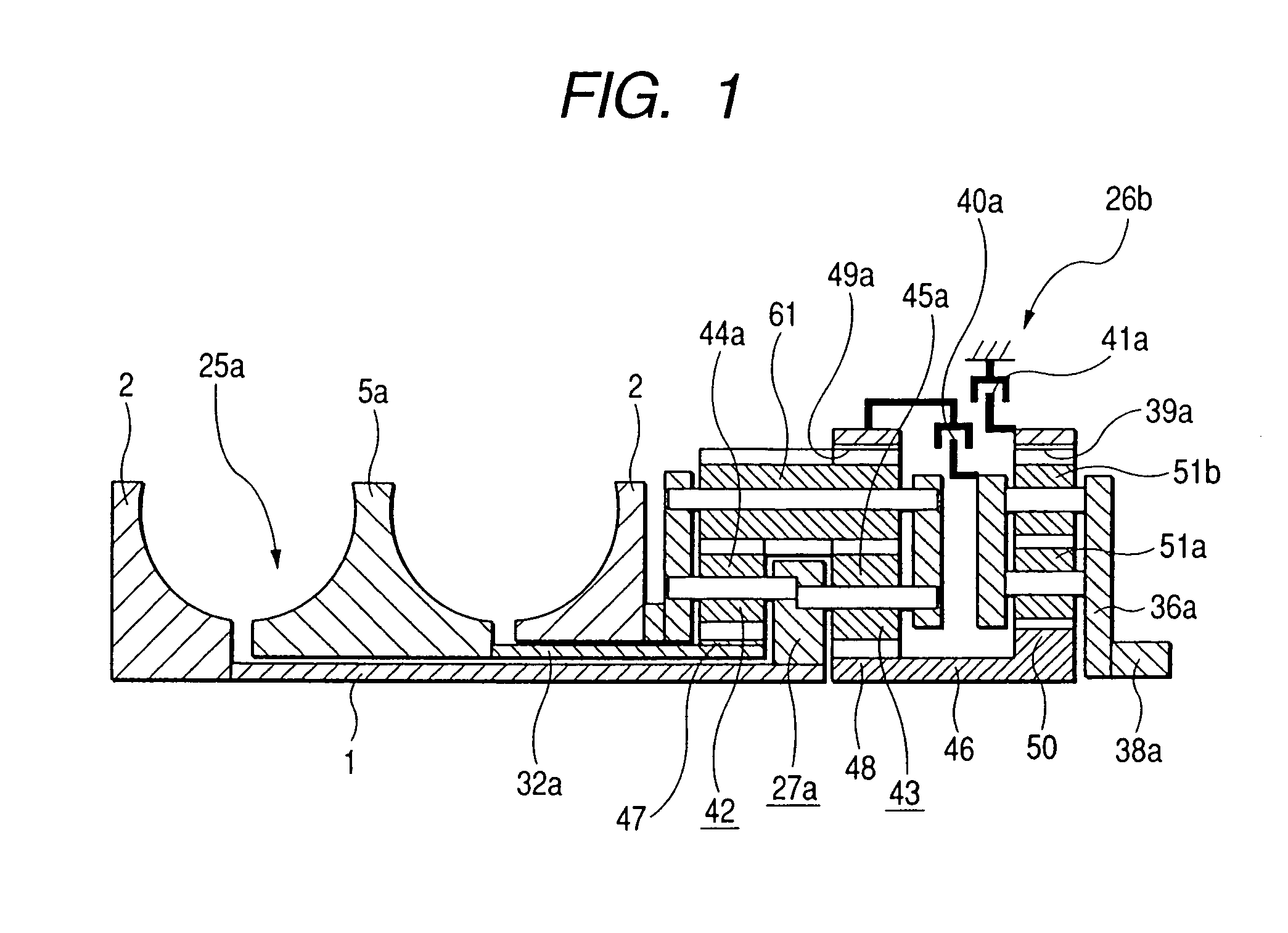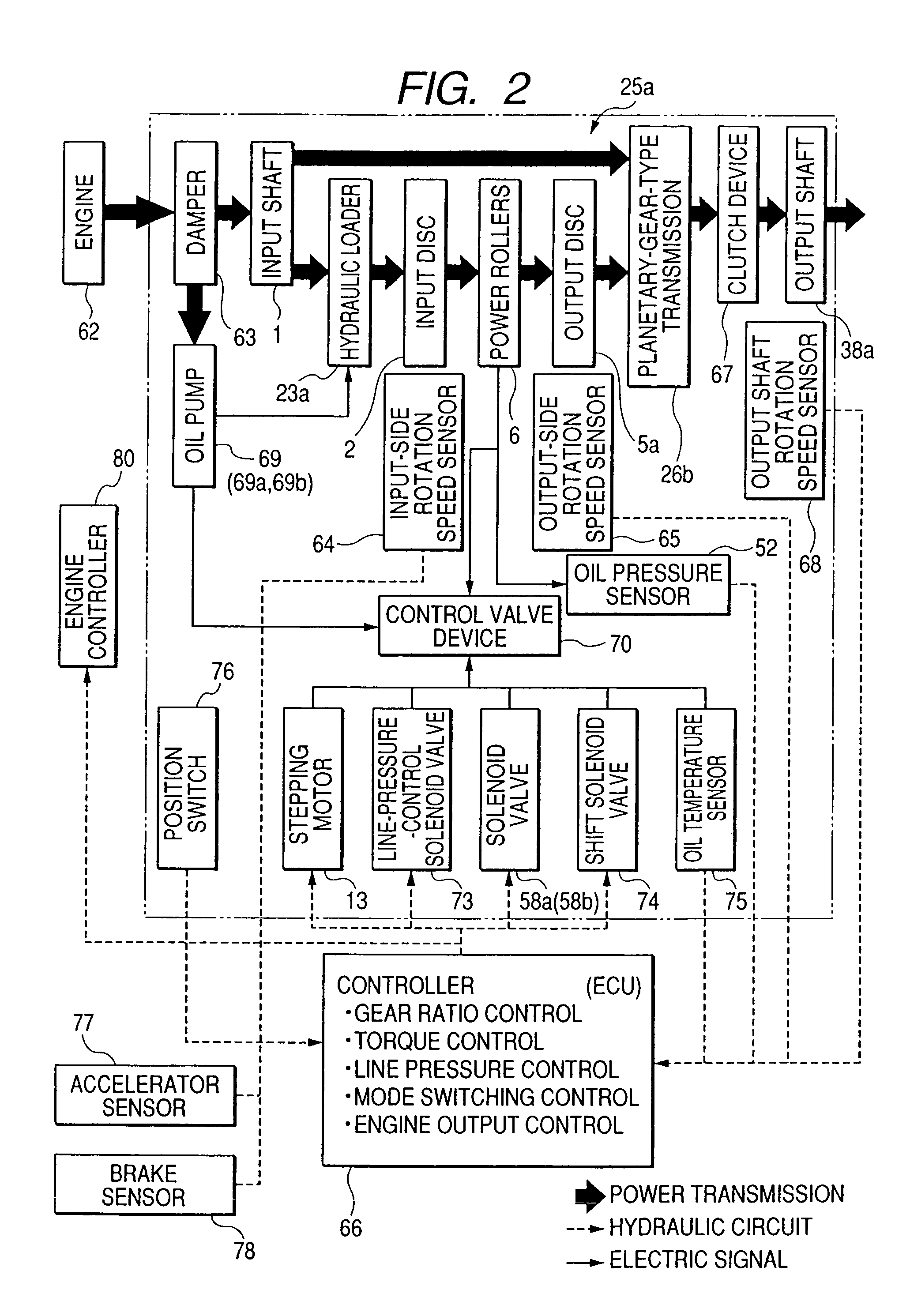Continuously variable transmission apparatus
a transmission apparatus and continuously variable technology, applied in the direction of friction gearings, gearing elements, friction gearings, etc., can solve the problems of increasing the amount of time required for stepping on the brake pedal during the vehicle stop, increasing the amount of time required for stepping on the brake pedal, and causing the driver to experience an uncomfortable feeling. to achieve the effect of preventing the providing of an uncomfortable feeling
- Summary
- Abstract
- Description
- Claims
- Application Information
AI Technical Summary
Benefits of technology
Problems solved by technology
Method used
Image
Examples
first embodiment
[First Embodiment]
[0082]FIGS. 1 through 4 show a first embodiment of the invention. As shown in FIG. 1, a continuously variable transmission is constituted by combining a toroidal continuously variable transmission 25a and a planetary-gear-type transmission 26b of a differential unit. The constitution of the continuously variable transmission is principally the same as that of the continuously variable transmission of aforementioned conventional constitution shown in FIG. 10, or the structure shown in FIG. 11. In the continuously variable transmission of the embodiment, a planetary gear element—which is longer in an axial direction among the planetary gear elements constituting first and second planetary gears 42, 43 of the planetary-gear-type transmission 26b—is used as a planetary gear element 61 and provided on the outer side with respect to a radial direction. The planetary gear element 61 is meshed with planetary gear elements 44a, 45a provided on the inner side with respect to...
second embodiment
[Second Embodiment]
[0108]Next, FIG. 5 shows a flow chart for describing operation of a second embodiment of the invention. In the second embodiment, correction by a correcting control valve 57 (see FIG. 4) is started after an oil pressure differential between a pair of oil pressure chambers 24a, 24b provided in an actuator 10 has reached a predetermined value. As described above, an oil pressure differential between the pair of oil pressure chambers 24a, 24b is proportional to a torque passing through the toroidal continuously variable transmission 25a (see FIGS. 1 and 2). Accordingly, by observing the oil pressure differential, engagement of a clutch device 67 (FIG. 2) and stabilization of the torque can be detected. Accordingly, the correction is arranged so as to start when the oil pressure differential indicates that the torque has become stable. After the correction is started, the torque which is transmitted to the output shaft 38a after passing through the toroidal continuous...
third embodiment
[Third Embodiment]
[0109]Next, FIG. 6 shows a flow chart for describing operation of a third embodiment of the invention. In the third embodiment, a load-detecting device for detecting a load on the driving source engine 62 (FIG. 2) is provided. The engine controller 80 (FIG. 2) can be utilized as the load-detecting unit. That is, an increase in the load on the engine can be detected by utilizing a signal for directing that the fuel amount to be supplied to the engine should be increased, which is output from the engine controller 80 when a load on the engine 62 is increased. Then, on the basis of the increase in the load on the engine 62, engagement of the clutch device 67 (FIG. 2) and stabilization of the torque passing through the toroidal continuously variable transmission 25a (see FIGS. 1 and 2) can be detected. Therefore, the correction is arranged so as to start when the increase in the load of the engine 62 indicates that the torque has become stable. After the correction is ...
PUM
 Login to View More
Login to View More Abstract
Description
Claims
Application Information
 Login to View More
Login to View More - R&D
- Intellectual Property
- Life Sciences
- Materials
- Tech Scout
- Unparalleled Data Quality
- Higher Quality Content
- 60% Fewer Hallucinations
Browse by: Latest US Patents, China's latest patents, Technical Efficacy Thesaurus, Application Domain, Technology Topic, Popular Technical Reports.
© 2025 PatSnap. All rights reserved.Legal|Privacy policy|Modern Slavery Act Transparency Statement|Sitemap|About US| Contact US: help@patsnap.com



